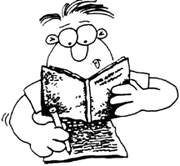 |
 |
 |
 |
 |
Contents on this page were published in the June/July, 1994 edition of the Washington Free Press.
WFP, 1463 E. Republican #178, Seattle, WA -USA, 98112. -- [email protected]
Copyright � 1994 WFP Collective, Inc.


REGIONAL WRITERS
IN REVIEW
|
Collected Poems by John Haines Graywolf Press, 1993 251 pages, $25 |
The poems of Haines' first book, Winter News (1966), were written in his Alaskan isolation, and those of them collected here reveal a hard gazing, a sharpened vision, and a deep grasp of the elemental world. They established a poetic form that Haines has employed through all of his work: most every stanza is a sentence, framed from short lines weighted with silence and raised to pure perception with the simplest of words.
Haines understood how late he had come to the wild, how he was a white man in the snow. He knew he was no discoverer; and he contrasted the two historical arrivals to the Alaskan wilderness in "And When the Green Man Comes."
Haines' homesteading had an end. As he puts it, "I re-entered, reluctantly yet necessarily, the world I had left behind many years before." He brought his poetry with him, back to the "coin-deciphered world" where "Gasoline [is] the name of our country." And he wrote shaky, false-step poems searching for metaphors to address America's crises in the late 1960s and early '70s.
A poet uses metaphor the way a seamstress uses thread, to stitch the world together, to seam observation with understanding, because experientially the world to us is fractured in slivers of sensation. Aristotle wrote that the greatest poetic skill was "to be a master of metaphor. It is the one thing that cannot be learnt from others ..."
Haines found the right transitional metaphor in the house:
For ten years Haines' poems returned again and again to house images and their equivocal meanings. We desire a house where "the stilled heart come[s] home through smoke and falling leaves," where there is a "a trace of lilac in a hallway," "a house at ease." But "there are depths in a household where a whale can live;" there are homes of discord and the "endless hallway where lonely coathangers banged softly together." Our neighborhoods hold "the gunfire of locks and shutters" and "So many painted boxes .... So many buried disasters built squarely."
In this extended fugue about home Haines arrives at his fundamental question:
We cannot hope, as he fantasizes in "It Must All Be Done Over," to bring down the houses, take to tents and caravans, and make our lives "into an endless camp, learn to build with air, water and smoke." The night people, who "spoke in whispers, or with the cries of storm-driven birds," and their oral cultures have fallen silent. Haines describes with mythic power, in the poem "Water Night," how their lips have been crushed, how books have put them to sleep. Echoing T.S. Eliot, he uses irony to lament how humanity has withered in the city, "In the Forest Without Leaves:"
What is left for us at the end of Haines' poetic journey? In "Night," the last poem and summation of the collection, Michelangelo's great female figure asleep in Florence's Medici Chapel becomes an oracle and sees what yet may sustain us: how the "leaves of the one standing tree fall through the twilight," how the "nightborn images rise, the owl in the mask of the dreamer wakes." Returning to his beginnings, Haines has found a deepness in Western culture that can bear comparison to the wild - our great art .
John Haines' poems are like bones: strong, lasting, rich with marrow difficult to reach. He has also written an autobiography, Living Off the Country (University of Michigan Press, 1981), and a memoir, The Stars, the Snow, the Fire (Graywolf Press, 1989) about his homesteading life in Alaska. He returns to Alaska for part of each year.
 |
 |
 |
 |
 |